Bacterial agents for cesspools and toilets
Most of the cottages have nesting boxes with cesspools. Only recently they began to do instead of them septic tanks or put VOC... The inconvenience of the cesspool is that it fills up quickly, its contents must be pumped out - call a sewer truck. Another unpleasant moment is insects and a rather strong smell. Bacterial agents (bacteria) for cesspools can solve all problems at the same time. They recycle waste into a slurry. At the same time, insects and smell disappear, and the contents of the container can be pumped into compost or buried on the site - this slurry is not dangerous, but is an excellent breeding ground.
The content of the article
Forms of biological products for cesspools
Cesspool bacteria are crops grown in a nutrient medium that feed on organic matter. Depending on the form of the preparation, they are dried (powders and tablet preparations) or an aqueous solution is made. In the preparation, bacteria are in a dormant state, certain actions are required to activate them. They depend on the form of release and are written in detail on the package. The exact execution of the instructions is very important to get the result.
Regardless of the form of release, most of the drugs can be used to enhance processing in septic tanks. Dosages vary (septic tanks usually have a larger volume than a pit) and the method of "delivery" to the destination. In the case of house drains, bacteria can also unclog the drain... To do this, the drug is poured into the sewer and not used for at least 24 hours. During this time, microorganisms dissolve fats and stuck waste and water begins to drain better. This is a good substitute for chemicals, especially for septic tanks or VOCs, because after cleaning with chemistry, the quality of processing is noticeably reduced. And so you just add another batch of bacteria from which the drains will only become cleaner.
They release bacteria for cesspools in three types of preparations:
- dosed powders;
- liquid solutions;
- in the form of tablets.
In principle, the form of issue does not matter. The number of microorganisms, their condition and the degree of "freshness" are important. All drugs have a limited shelf life. When buying, be sure to check the dates. The later the date is, the worse - the bacteria could die.
Storage conditions are also standardized by manufacturers. Usually this is the temperature - the drug should not freeze (in theory, it should not even cool below + 10 ° C). It is impossible to know whether the storage conditions were followed. One can only believe empirically - if the drug does not work, the reason may be that bacteria have died as a result of improper storage.
What to do with bacteria in powder form
Sump products in powder form occupy a large share of the market. It is convenient: they are packaged in small bags. It is usually necessary to pour out one sachet at a time, more is required only at the start (first) load. Inside there may be powder, or there may be granules - different manufacturers have different ways.
As a rule, the powder must be diluted in water, left for a while, and then pour the "leaven" into a cesspool.
Liquid cesspool agent
It is a concentrated solution of bacteria. As well as dry preparations, concentrates must be "fresh" and stored at above-zero temperatures. Overheating is also not allowed - the upper limit of viability of most bacteria is 40-45 ° C.
Using pit latrine fluid is even easier. All that is needed is to measure the required volume (set in milliliters or caps) and pour it into the pit. Sometimes it is necessary to dilute the drug in water and then pour it out. Everything is clearly spelled out in the instructions.
Toilet pills
This type of cesspool bacteria is molded into small, tablet-like discs, only of a much larger diameter. A package or tube contains a certain amount of them. Each of the tablets is packed in plastic wrap. Before adding the cesspool, the shell is removed, the agent is thrown inside.
If the home sewage system is based on a septic tank, the pill is thrown into the toilet, waiting for it to dissolve, and then flushing the water.
What effect should be expected
If you believe the advertisements of some preparations for processing waste in waste pits, hardly half of the volume of wastewater will remain in it, there will be no smell at all, and you can water the lawn with liquid. Reality differs significantly from promises. What can you really get:
- Significant reduction in fecal odor one to two weeks after first loading. If the treatment is carried out regularly, the smell really disappears.
- The volume of effluent may decrease, but not dramatically. Everything that was in the pit remains in it. The level is reduced due to the fact that the solid components of the waste are processed - they turn into slurry, and the air contained in them is released.
- There will be fewer flies and midges. This is true - the bacteria recycle their larvae too.
- Under normal bacteria operation, the substrate obtained after processing is not toxic or hazardous to the environment. On the contrary, after "ripening" an excellent fertilizer is obtained from it. The resulting slurry can be pumped out fecal pump on the compost heap and after two to three years use it as intended.
Cesspool bacteria can provide these results. They are not able to completely process wastewater to a state of pure or almost pure water.
Why bacteria don't work
We have already named several reasons - storage conditions are violated or the preparation is "old". In this case, there were simply no viable microorganisms, or there were too few of them. But there are other reasons too:
- You bought a fake. Popular expensive imported drugs are especially often counterfeited. So it turns out that for some the same remedy works, for others it does not.
- There is too little water in the hole. For normal life, bacteria for a country toilet need a sufficient amount of water. If you have a pit without a bottom, waste was stored in it for many years, and the liquid went into the ground. Even if the entire surface is covered with bacteria, they will not work. In order for them to process organic matter, the medium must be liquid.
- The temperature was too low or too high. Biological products for toilets are efficient only at freezing temperatures. The lower limit differs from product to product, it is usually + 5-10 ° C. Also, bacteria do not like overheating - the upper limit of their "performance" is + 40-45 ° C. Our air rarely warms up to such temperatures, only we must take into account that the decomposition of organic matter proceeds with the release of heat, so that the slurry may well be heated to such degrees. The conclusion is simple: it is necessary to fill in the bacteria for the cesspools in the spring, with a steel "plus" on the thermometer - so that there are no night frosts.
- The effluent contains a large amount of active chemicals - bleach, detergents, etc. Such an environment is destructive for bacteria, they simply die.
- A crust has formed in the pit. All bacteria that are in preparations for sewage pits are anaerobic - they need oxygen for their vital functions. The crust does not allow oxygen to penetrate into the drains, due to which microorganisms die. If the drains fall from a height, they break this crust.At least partially. If the level of waste is already such that the outlet of the waste pipe is below the crust, you will have to break it by hand. The easiest way is to pour out a bucket of water, breaking this crust itself. In industrial septic tanks, there are aerators for this, you can think of something similar for yourself - throw a hose with holes made in it into the pit and connect a compressor to it from time to time.
- Preparations for country toilets work at a certain acidity. The environment can be neutral or acidic, but in an alkaline environment, bacteria are practically inactive. If the cesspool is more than 3 years old and until that time the waste has not been processed, the environment in it is alkaline. In order for the bacteria in the cesspool to work, it is necessary to make the environment neutral or acidic. The easiest way is to empty a bottle or two of vinegar. After a week, bacteria can fall asleep. But this option works only for sealed pits (in which the liquid does not leave). With the dry residue, this trick will not work. It can only be taken out manually.
As you can see, there are many conditions that affect the final result. To deal with toilet odors easier and to ensure successful waste decomposition, it is best to start treatment almost immediately after using the waste pit for its intended purpose. If a large amount of waste has already accumulated in it, it is more difficult to recycle it.
What bacteria are better for cesspools?
Nobody can say unequivocally “buy this drug and everything will work”. Some of the same tools work perfectly well for some, average for others, and for others they hardly work. Possible reasons are described above, but it may still all depend on the type of waste that falls into the pit. At the dacha there will be a little chemistry, but, most likely, a lot of organic matter and bacteria will be more active. There are more chemicals in household wastewater, as a result, the same drug may no longer be so effective, but another will work very well.
In general, what can be advised - try different drugs, starting with cheap ones. One of them will help you. By the way, there is one trick that will help to activate the processing processes. Periodically pour out expired kefir or sour milk into the waste pit, you can pour out a bag or two of semolina. Bacteria love protein, and there isn't much of it in the waste. By feeding them, you stimulate the development of the colony, the decomposition process will go faster.
| Name | Application temperature | Packaging | How much | Startup loading | Regular monthly loading | Drug type | Acidity of the environment | Winter work | Manufacturer country | Price |
|---|---|---|---|---|---|---|---|---|---|---|
| Bioenzyme BIO-R1 | 5 ° C to 40 ° C | 1 package 100 g | up to 4 m3 | 200 g (2 packs) | 100 g (one pack) | mixture of bacteria | PH = 5.0 - 7.5 | Works at a double dose | Czech | 6-7$ |
| Biosept 600 | 5 ° C to 40 ° C | 24 bags of 25 g | up to 4 m3 | 4 bags (100 g) | 2 bags (50 g) | mixture of bacteria | PH = 5.0 - 7.5 | asleep | France | 20$ |
| ORO-fresh WC-Aktiv | 5 ° C to 60 ° C | 12 bags of 25 g | up to 4 m3 | 4 bags (100 g) | 2 bags (50 g) | mixture of bacteria | PH = 4.0 - 10 | in the sleeping | Germany | 12$ |
| Vodogray | from 30 ° C to 40 ° C | up to 2 m3 | 100 g | 20 g | Ukraine | 12$ | ||||
| EPARCYL (Eparsil) | 22 packages of 32 g | up to 2 m3 | 2 bags (64 g) | 1 bag (32 g) | mixture of bacteria | France | 30$ | |||
| Saneks | 5 ° C to 45 ° C | 400 g + measuring spoon | up to 2 m3 | 2-5 scoops | 2 scoops | a mixture of bacteria and enzymes | PH = 5 - 8.5 | Works at positive temperatures in the pit | Poland | 12$ |
| (SEPTIFOS) Septifos | from + 2 ° С to + 40 ° С | 18 sachets, 25 g each | up to 2 m3 | 3 sachets (75 g) | 2 packets (50 g), one twice a month | 27,5$ | ||||
| Microzyme Septi Treat | +2 to 45 ° С | 250 g | 1-2 m3 | 250 g | 50-100 g | mixture of bacteria | pH = 5 - 9 | asleep | Russia | 12$ |
| biopreparation Successful | 30 g | 0.5 m3 | 1 package every week | 1 pack | mixture of bacteria | Russia | 1,2$ | |||
| BIOTEL | from 4 ° C | 25 g | 1 m3 | 5-7 grams once a day | bacterial-enzyme composition | in a non-alkaline environment | inactive | Russia | 1 $ | |
| Atmosbio | 5 ° C to 40 ° C | 24 bags of 25 gr | 1 m3 | 5 sachets | 1 package per week | a mixture of bacteria and enzymes | France | 17$ | ||
| Septic System Mainteiner DWT-360 Maintainer DWT-360 SSM | 5 ° C to 40 ° C | 454 g | up to 2 m3 | 3 scoops | 1 scoop | mixture of bacteria | USA | 30-40$ | ||
| Dr. Robik Roebik 109 | 5 ° C to 40 ° C | 1 bag 75 g | 1.5 m3 | 1 bag 75 g | 1 bag 75 g | mixture of bacteria | Russia | 1,8$ | ||
| Dr. Robik Roebik 509 for overcrowded and old pits | 5 ° C to 40 ° C | 798 ml (liquid) | 1.5 m3 | one-time use | concentrate | Russia | 14$ |
There are a couple of remarks about the "Dr. Robik" toilet facilities. These are the products of an American firm, but they have a factory in Russia. Russian-made drugs are called Roebik, American Roetech. The difference in price is quite significant. Previously, the domestic Robik also worked perfectly, so there was no point in overpaying, but in the last year the situation has worsened, so it's worth considering.
Any of the drugs on the list have good reviews. It is impossible to say that all of them are positive, but most of them speak of good results. So that the bacteria for cesspools and country toilets does not disappoint, you need to buy them not in the market but in the store. There are more chances that the storage rules will be followed. And in order not to buy a fake, it is advisable to buy from the campaign's officials. Information about this can be found on the manufacturer's website in the "Where to Buy" section.

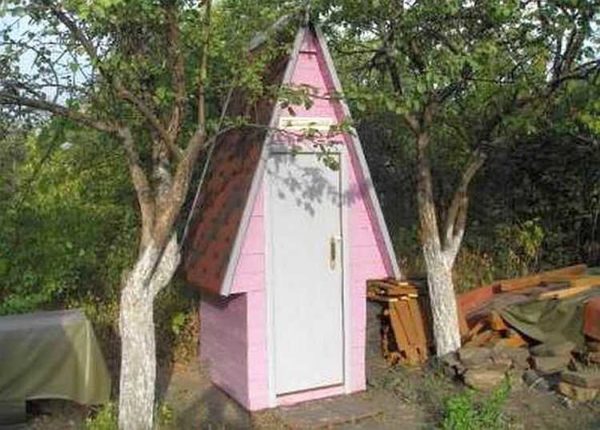
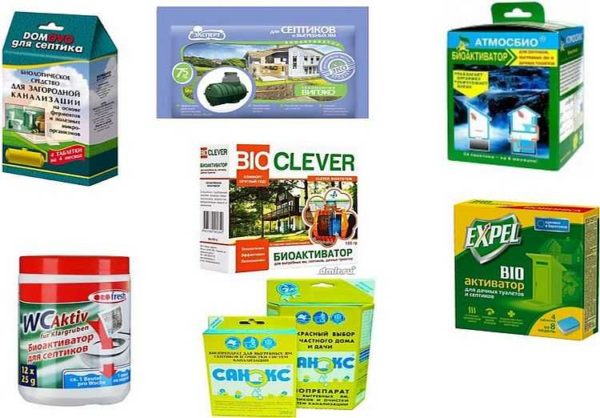
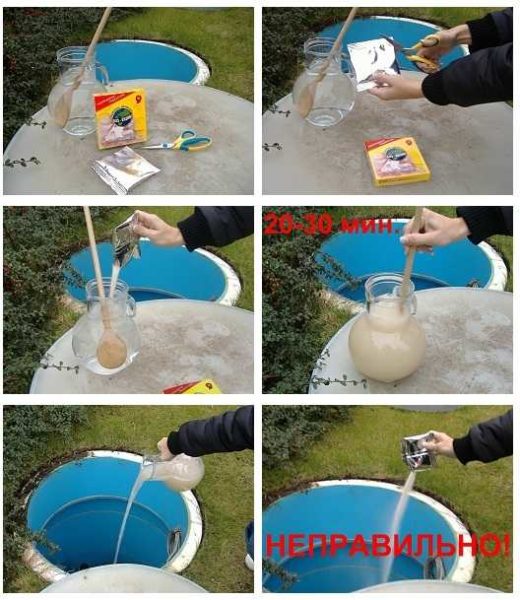
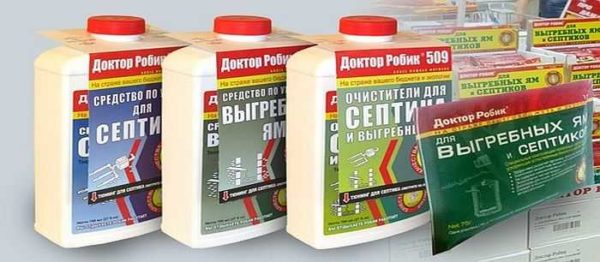
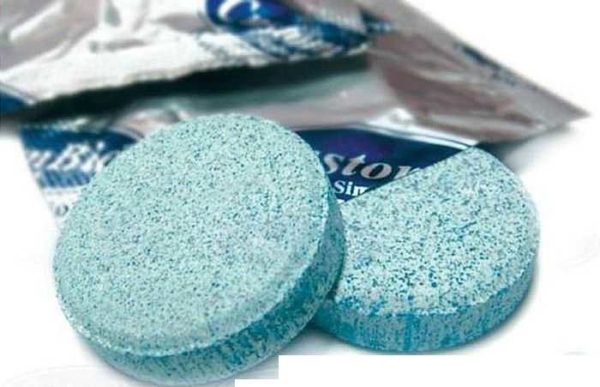
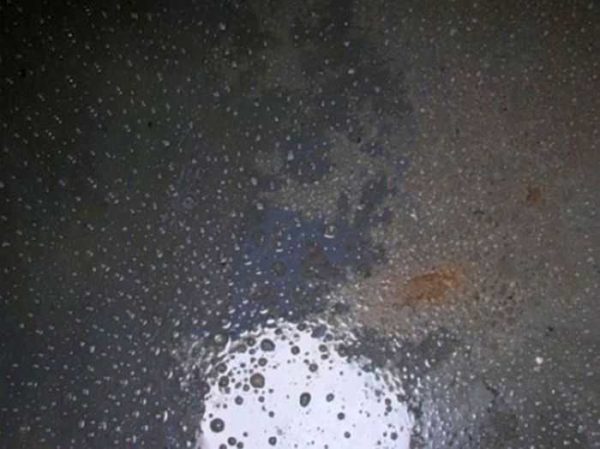
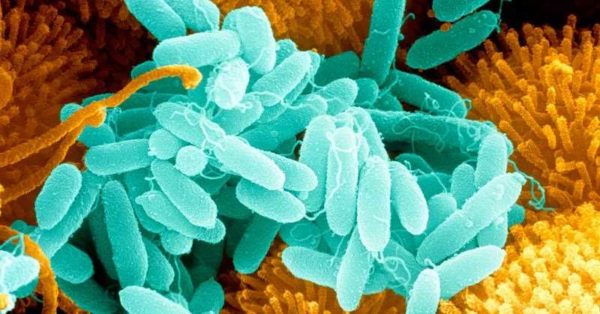
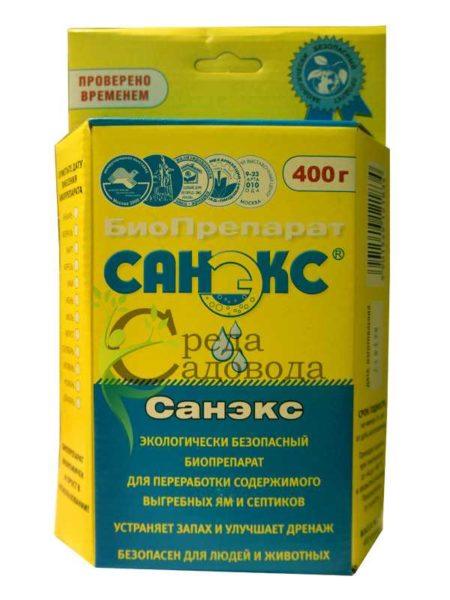
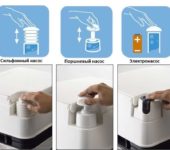


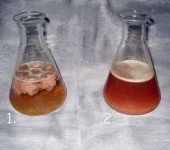





I used bacteria before, so it seemed to me that the processing process took too long. This time, before pumping out the cesspool, I want to try Devon-N concentrate. 1-2 days before pumping out using a fecal pump, you need to pour 1-2 liters of the product for each cubic meter of volume.
The following points attracted me:
1) The liquid is not afraid of household chemicals
2) Can be stored for at least 4 years from the date of production at temperatures from -20 to + 40 ° С
Description:
Means "Devon-N" is a universal odor remover with a wide spectrum of action in the form of a liquid concentrate. Liquid "Devon-N" quickly and effectively removes odors (fecal, vomit, etc.), is not afraid of freezing, is not afraid of washing out of detergents, promotes the natural biodegradation of organic waste with a significant decrease in volume. It liquefies fecal matter well in cesspools and septic tanks.
The main component of the liquid is a nitrate oxidizer - this is a common nitrogen fertilizer, therefore, the Devon-N liquid does not contain formaldehyde, acids, alkalis, quaternary ammonium compounds. It is environmentally friendly as all components are biodegradable. In addition, Devon-N liquid is non-toxic, does not irritate the skin and mucous membranes, and is easily washed off with water. When using Devon-N, all organic waste, including fecal matter, can be used as one of the components for making compost.
Liquid for biotolets "Devon-N" is intended for use in dry closets, toilets "with a retractable bucket" and cesspools, bucket-toilets, cottage sewage systems, etc., as well as for removing odors from pets and other unpleasant odors in residential premises , car salons, etc.
Devon does not really contain formaldehydes, and is not afraid of them, since the basis of Devon is chemistry, but on bioproducts. It fights odors well, but does not process the contents to technical water, which means that the septic tank quickly silts up and you cannot do without a good biological product that is able to cope with this problem. The conclusion is simple: for a container with a concrete bottom, which is periodically pumped out, Devon is suitable. And for containers with drainage, the biological products listed above are better suited.
To be honest, I have never been interested in what kind of environment is in my cesspool. I have never fed bacterial colonies with kefir or semolina.Didn't measure the temperature of the waste…. For the past four years, I have been stupidly falling asleep in a pit of some sort of SANEKS and not worrying about what he is doing there and how. I firmly knew that in a week there would be no smell in the toilet, and in a couple of months there would be practically no contents left. What else do I need, an ordinary consumer?
I can only add one thing. If it were not for the above-mentioned "Sanex", I would never have coped with the bottom sediment and would not have established drainage in my septic tank. I tried so many things: I poured chemistry, and pierced with a long pipe ... Then the neighbor took pity and gave me his "Saneks". Now he became mine too.